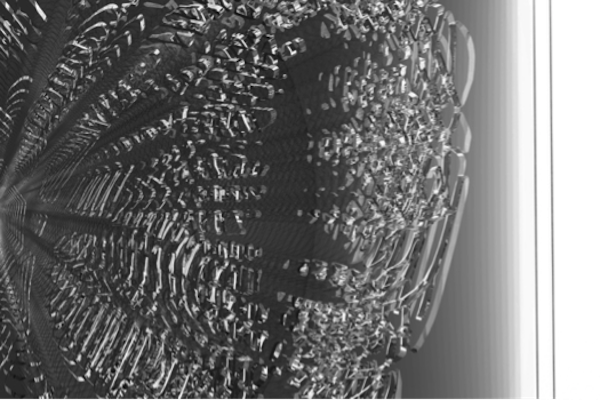
AnthropoScene: Art in a manufactured era
By Felice Grodin, Artists in Residence in Everglades TO BE DETERMINED// An Artful Excavation, 2015, Felice Grodin and Noel Palacios
What is it to ‘create’ during the Anthropocene? The new geological age that some hypothesize began over two centuries ago with the burning of fossil fuels, is perhaps accentuated by the detonation of the world’s first nuclear bomb in Alamogordo, New Mexico on July 16, 1945.[i] The ‘signal’ or traces are both chemical and biological – increased radioactive isotopes, increased atmospheric carbon (CO2), increased atmospheric methane (CH4), lower acidity (pH) in the oceans, increased permanent organic pollutants (POP’s), and global species transfer, to name a few. These global changes have ushered the possible end of various plant, animal and eventually, human life. If then this extreme strata or ‘litheostratigraphic’ layer is underway, a sedimentary recording of ends – as artists do we still make ‘things?’ In an era that has accelerated our own envisioned extinction – how do now define ‘human?’ Perhaps there is a critical need to revaluate the role of art in general as our own boundaries between ourselves and the earth are now porous. What is this new ecology? How do we describe it? How must an art practice expand in order to grasp the new state of things and possibly intervene within it?

Interspecies Collaboration, 2014, Keith Waddington
Some examples of this evolving practice can be seen in the exhibition AnthropScene: Art and Nature in a Manufactured Era. Like many of the participants in this exhibition at the CAS Gallery at the University of Miami, Keith Waddington utilizes his background both as an artist and beyond. Possessing a PhD in biology and an AIRIE Board of Director member, he collaborates directly with bees. The three dimensional piece Interspecies Collaboration (2014) considers the behavior(s) of the bee and the human. As had been pointed out to me recently by Keith, worker bees give up direct offspring in favor of protecting sisters. This is in the hopes that one would eventually become a queen. This is different than humans who favor direct offspring or children. Thus actions, socio-political values and ethics in other life forms may be obliquely ‘other’ to the vantage point of the human. Yet can we still ‘work’ with another species?

Exotic vs. Exotic, 2014, Valerie LeBlanc and Daniel Dugas
Valerie LeBlanc and Daniel Dugas, (AIRIE 2014) also screen a series of videos. In their flow series, human migration is considered. In Exotic Vs Exotic (2014), are we the invasive species or are we simply another layer that is added to this current geology? Both views are rendered within works that reveal the human touch throughout the ecological systems in the Everglades.

Walking with Satellites, (detail), 2014, Skip Snow
Skip Snow, AIRIE Board Member who has worked for the National Park Service for 38 years – 25 at Everglades National Park – has created a notational system that synthetically records. Walking with Satellites (2015) is a series of mounted photo stills that remind us that we are bipedal. Evoking the Nazca Lines of southern Peru, they are recorded cultural glyphs created by planned urban sketches. Anteater, beaver, cartoon rex and the asteroid of doom, dragon, duck, gator, hot beverage, killer robot, kokopelli, room key, skeeter take two, submarine, wading bird and zipline use mediums both above and below to trap its results. Initially planned via hand drawing then recorded by a hovering GPS tracking device, the city becomes the canvas in which he himself is the brush. This sedimentary layer that is alternately real and unreal, human and non-human, micro and macro, uniquely one of the Anthropocene.

Works also on view by Xavier Cortada, Daniel Dickinson, Brenna Dixon, Dana Levy, Lucinda Linderman, Deborah Mitchell, and Susan Silas.
Recent Content
-
Artsarticle ·
-
Artsarticle ·
-
Artsarticle ·

